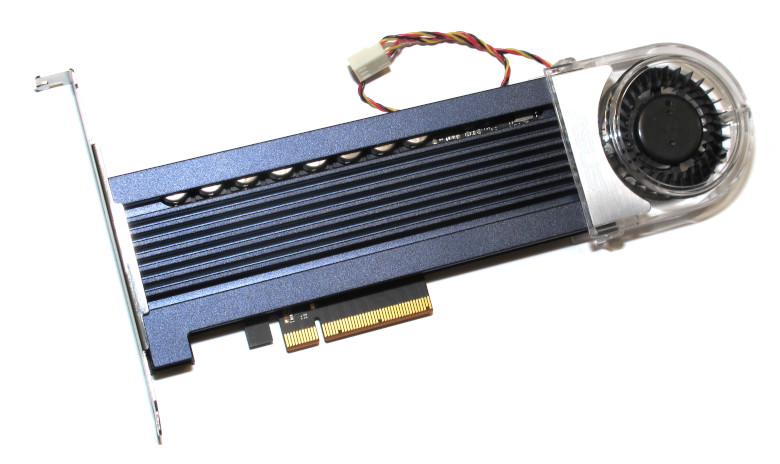
There were times when flash drives were so expensive that nobody even considered them as drives. Tens of thousands of dollars. They were positioned as something revolutionary, capable of giving space speed to data storage systems. Just like Intel Optane recently, but we won’t talk about it yet, it’s too expensive.
Perhaps, then, marketers came up with a name like
Flash Accelerator (flash accelerator or flash accelerator).
The trick is that devices originally positioned as accelerators are now difficult to sell as SSDs, so sometimes they can be bought very profitably .Motivation
- Would you like to buy a few terabytes SSDs for a reasonable price?
- To make the resource tens of petabytes?
- So that whatever you do, you would not be able to exhaust it?
- At the same time with power protection and made of the highest quality parts and the most stable memory?
In this article, we will consider flash accelerators on a PCI-E bus from 800GB (I don’t see the point of considering smaller capacities), which can
now be bought at different flea markets for the price of ordinary SSDs or less and used in ordinary computers or servers, while obtaining corporate quality , power protection (all models have massive capacitors) and a resource.
Flash Accelerator Families
1. PCI-E cards visible in the system as ordinary SAS-hard drives.
This family began with LSI Nytro Warp Drive devices. Since there are drivers for LSI raid controllers in almost all operating systems, LSI did not philosophize and made its device visible as a regular hard disk, more precisely as a set of disks connected to an HBA controller.
Pros:- There are drivers everywhere. You can now easily put Windows 10 on it
- penny price: from $ 50 per version with 800GB
Minuses:- SAS protocol is not ideal for NVMe devices and somewhat cuts maximum speed.
Review model at 800GB on TweakTown .
Overview of the 400GB model on StorageReview .
Appearance:
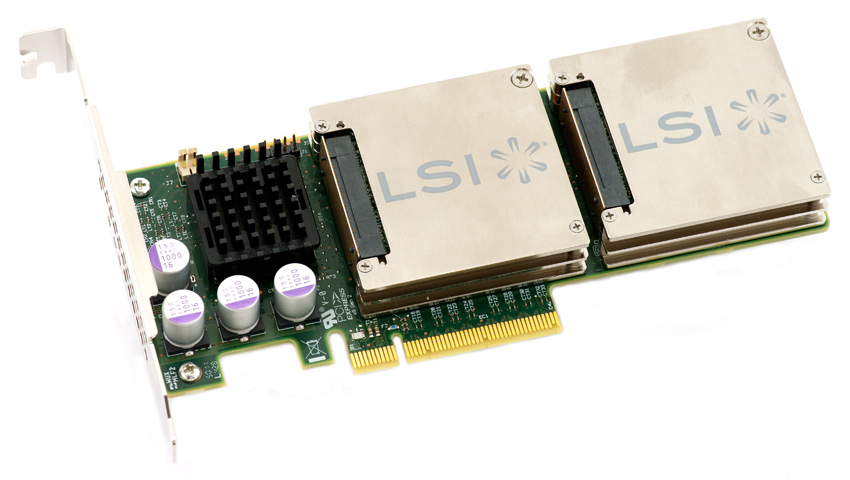
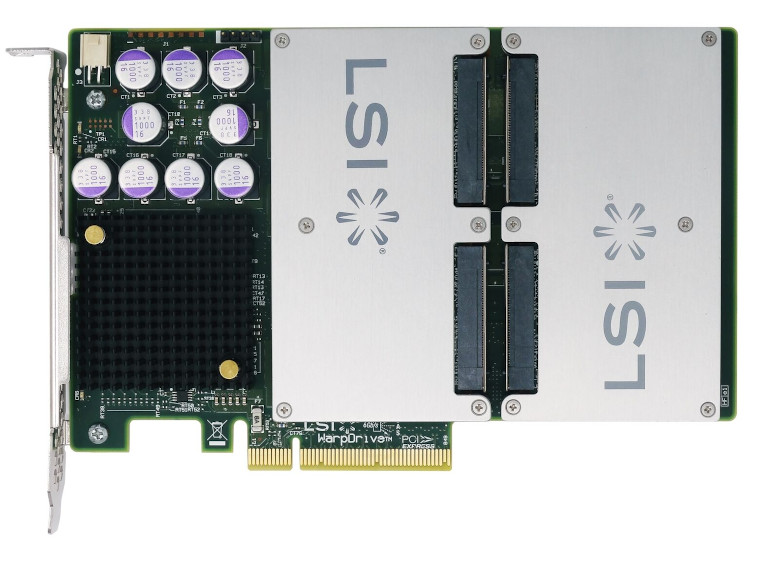
They were, in fact, the very first flash accelerators, so their speeds were low by today's standards. Although, of course, in any case, faster than the SATA III SSD. However, the resource was declared colossal - up to 90 Petabytes for the 3.2TB model!
A device is defined as 4 disks that can be used separately or assembled from them software RAID 0/10/5/6 using OS, LVM, or file system tools.
Single Unit and RAID 0 Speed IndicatorsSingle module:

Windows Raid 0 (disk management)
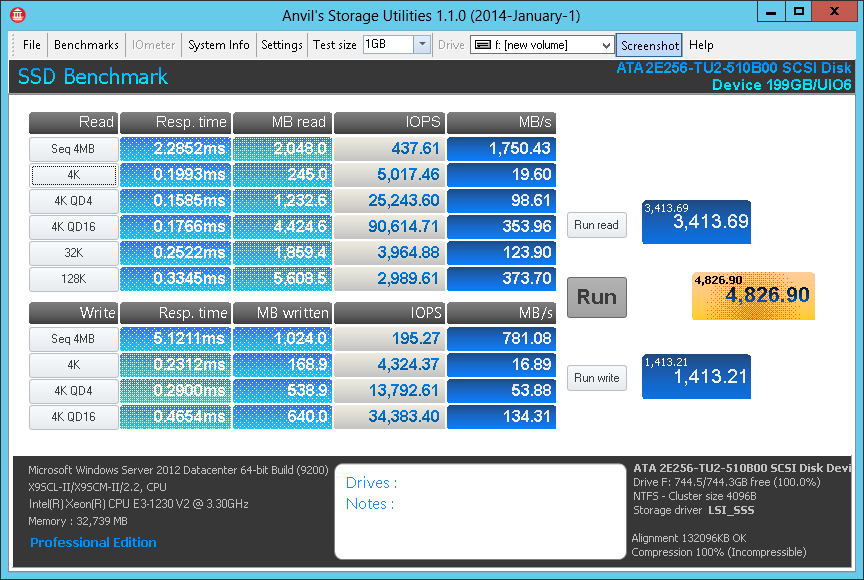
Documentation:
Sun Flash Accelerator F80 Owner's ManualVideo reviews in English:
Sun Oracle F80 (LSI branded Nytro Warpdrive)LSI WarpDrive / Sun F40 (review and speed)The LSI Nytro Warpdrive was developed by the Seagate Nytro XP6302:
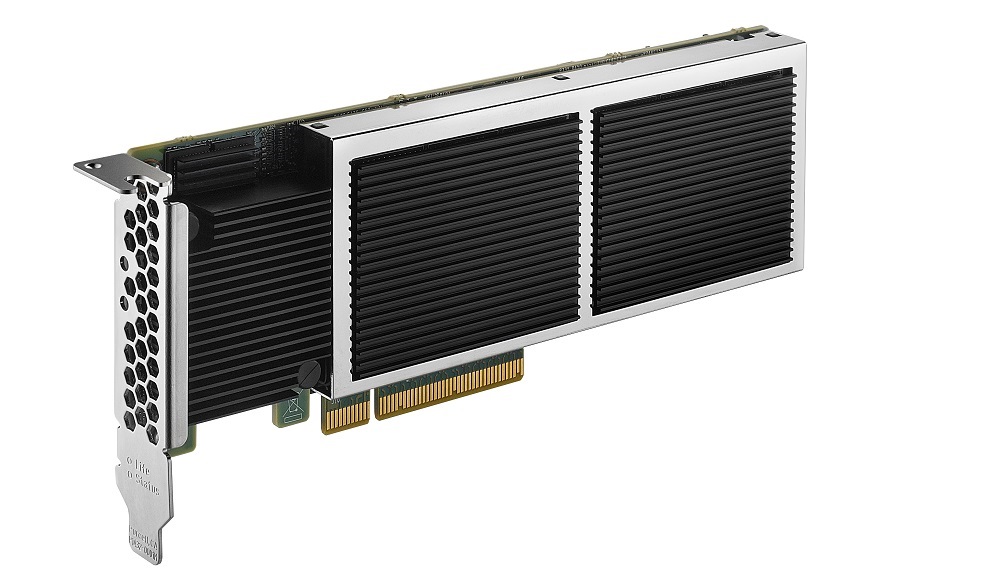 Accelerator Description Seagate Nytro XP6302
Accelerator Description Seagate Nytro XP6302 .
And then the Seagate Nytro XP6500 model:
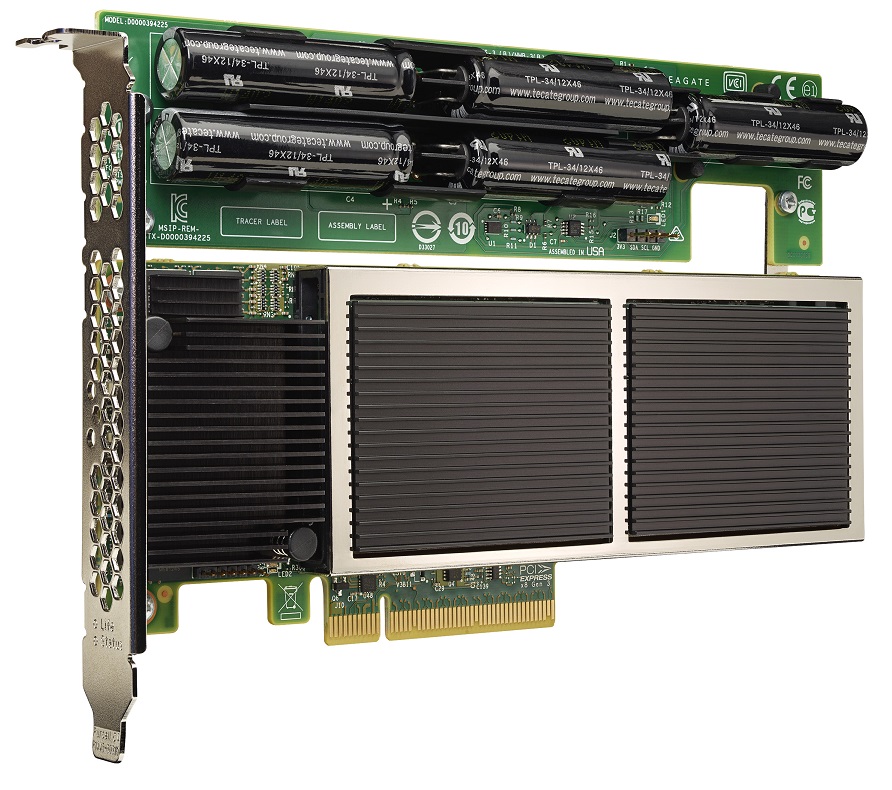 Accelerator Description Seagate Nytro XP6500
Accelerator Description Seagate Nytro XP6500 .
There are also tricky models: LSI Nytro MegaRAID 8120-4i 1TB and 8240-8e8i 1.6T, which can themselves assemble hardware-based RAID 0 and RAID 1 arrays from the built-in SSDs and cache connected HDDs. Resource data could not be found. Just that eMLC memory.
Appearance and description of the LSI Nytro MegaRAID series 2. PCI-E cards, visible only with specific drivers
These are, first of all, SanDisk Fusion ioDisk and ioMemory, which were developed under the leadership of Steve Wozniak. In these cards, they completely abandoned the simulation of a regular disk and created their own layer of abstraction of the VSL block device. These cards were issued until 2017.

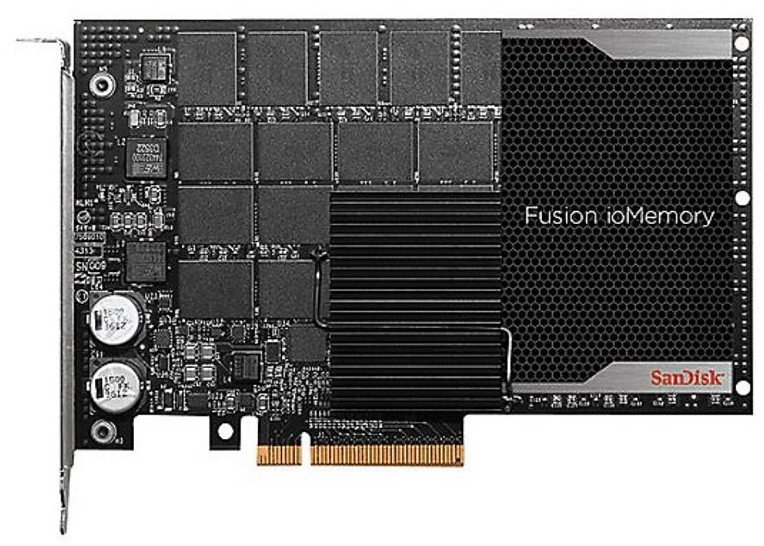 Pros:
Pros:- cards still amaze with their performance on random write operations;
- with an increase in processor performance, card performance increases, since all the algorithms serving the card are transferred to the driver;
- Western Digital (SanDisk) is still publishing the latest drivers and firmware for non-branded versions. The latest version of firmware 4.3.6 and drivers was in October 2019.
Minuses:- cannot be bootable (
in theory it can be under UEFI, but there are no instructions on the network how to do this ); - for functioning drivers are needed;
- consumes the host RAM for the translation table and internal algorithms.
Fusion PX600 1.3TB and Fusion SX350 3.2TB speed testing HGST Virident FlashMAX II and III belong to the same class. It’s more complicated with them. To get the driver you have to
go through the quest . Most likely they have not been updated for several years. I do not recommend buying, but there is one in the table. If someone passes the quest with the drivers, I will add information to the article.
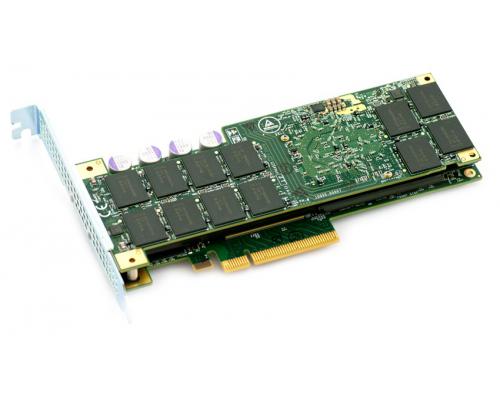
3. PCI-E cards supporting the NVMe specification
Such disks do not need drivers and can be bootable if your BIOS supports UEFI 2.3.1 and higher (standard from 2011).
These are Oracle F160 (based on Intel P3605), F320 (based on Samsung PM1725) and F640 (based on Samsung PM1725b).
Pros:- drivers are everywhere
Minuses:- the price in the secondary market may be higher, since the technology is the most modern of the considered
Oracle F160 and Oracle F320 speed testing Flash Accelerator Comparison Chart
Test results will be given in parentheses if they differ significantly from those stated in the specification.
Cooling
To cool the cards of the Nytro series, a decent airflow is required - 200 linear feet / minute ≈ 2 feet
3 (with the right duct), additional 4–5 feet
3 fans will be needed in the desktop case (thanks to
Igor_O for the calculation). Throttling temperature 73 ℃.
Perhaps Seagate Nytro accelerators will also require additional power (39 watts claimed, which is higher than the standard 25 watts on PCI-E x8).
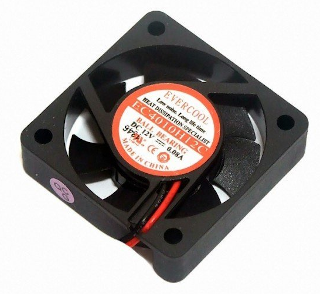
SanDisk Fusion cards in an ordinary desktop case overheat quickly, so I recommend installing a 4-cm cooler on them.
In the picture Evercool EC4010H12C 12V 0.08A. I also tried Noctua NF-A4x10 FLX 12V 0.05A: it copes, but on the verge. So 0.08A is better.
In fact, SanDisk Fusion also knows how to take energy more than 25 watts. This is necessary for maximum device speed. On good overclocking mothers there is no problem with this, but on cheap ones it’s not a fact. In principle, any slot in which you can potentially plug an x16 video card, as a rule, provides 75 watts, so see the documentation for the motherboard.
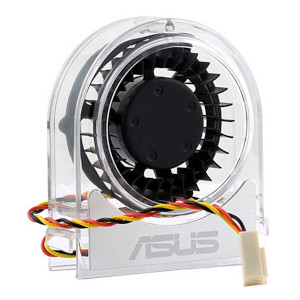
Flash accelerators Oracle F320 and F640 also decently warm, but the temperature does not reach 70 degrees, after which throttling begins. They are equipped with a massive radiator, so cooling is not necessary. 55 ℃ is their normal temperature.
However, I would like it to be cooler in the case and find that the ASUS Optional Fan cooler for chipsets is perfectly suitable (after minimal modification by a file) for cooling them. With this cooler, the temperature becomes about 44 ℃ in a closed case. There are 2 versions of these coolers: at 0.08A and at 0.15A. Both cope, but I set myself more powerful.
The appearance of the accelerator Oracle F320 with ASUS cooler is shown in the very first photo in the article.
Difficulty of choosing
Most likely, if there is very little money, then you can choose LSI Nytro (Oracle F80). There are options from $ 50. Let me remind you that the full capacity is achievable only when creating software RAID 0 by means of Windows, LVM, ZFS, BTRFS and the like.
If you need a very fast random recording, it costs 8GB RAM or more, then you can play around with the brainchild of Steve Wozniak, Sandisk Fusion. It is better to take drives from SanDisk, rather than branded ones, since it’s more difficult to get modern drivers for them. It must be remembered that these disks cannot be bootable.
Worst memory usage table based on sector size and disk size.As a rule, it is best to leave the sector equal to 4K. But VMvare is only on devices with a sector of 512 bytes, so Fusion drives are not optimal for these purposes. Too much RAM will consume.
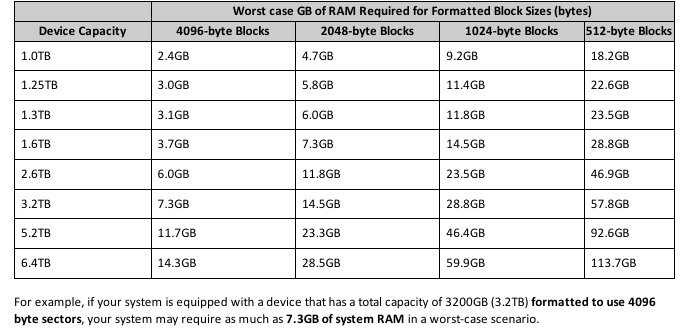
If you have enough money to buy a regular unincorporated PCI-E SSD from 2TB or higher, then you should consider Oracle F160, F320 and F640 accelerators. You will get more capacity and many times more resource for the same money.
Absolutely for all accelerators (except Oracle F160) you need 8 PCI-E bus lines. See the manual for your motherboard about which slot how many PCI-E lines are connected to.
When buying, we take either a new product, or an “Open box”, or with the remaining resource published in the product description.
Where and how to buy
Use Avito and well-known foreign trading platforms (you may need the help of mail intermediaries). If the desired product is not available, subscribe to the search results and these sites will notify you when the product appears.
Good luck to everyone!PS Direct the noticed errors in a personal. I increase karma for this.
